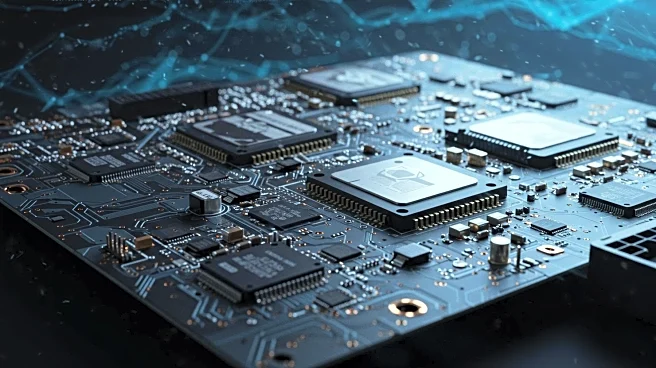What's Happening?
Nvidia and AMD have reached an agreement with the Trump administration to pay 15% of their revenue from semiconductor sales in China to the U.S. government. This deal comes after the administration initially blocked the export of certain AI chips, including Nvidia's H20 and AMD's MI308, to China in April. The agreement allows these companies to obtain export licenses to resume sales in China, a significant market for their products. Nvidia CEO Jensen Huang negotiated the terms with President Trump, reducing the initial proposed government cut from 20% to 15%. This arrangement is unprecedented, as it involves a voluntary payment to the government, circumventing constitutional prohibitions on export taxes.
Why It's Important?
The deal represents a significant shift in U.S. trade policy, potentially setting a precedent for future agreements with American tech firms. By allowing Nvidia and AMD to resume sales in China, the U.S. government aims to maintain its technological edge while securing financial benefits. However, this approach raises concerns about national security and the legality of such revenue-sharing agreements. Critics argue that the deal could undermine efforts to restrict China's access to advanced technology, potentially compromising U.S. leadership in AI. The financial implications are substantial, with Nvidia and AMD expected to generate billions in revenue from the Chinese market, contributing significantly to U.S. government coffers.
What's Next?
The agreement may lead to further negotiations regarding the export of more advanced chips, such as Nvidia's Blackwell series. President Trump has indicated a willingness to consider such exports under specific conditions. The deal also opens the door for similar arrangements with other tech companies, potentially reshaping the landscape of U.S. trade policy. Legal challenges could arise, questioning the constitutionality of the revenue-sharing model. Additionally, the deal's impact on U.S.-China relations and the global tech industry will be closely monitored, as stakeholders assess the long-term implications of this new trade strategy.
Beyond the Headlines
The deal highlights the complex interplay between national security and economic interests in U.S. trade policy. It underscores the challenges of balancing technological leadership with economic pragmatism in a rapidly evolving global landscape. The arrangement may influence future policy decisions, prompting a reevaluation of how the U.S. engages with international markets and manages its strategic industries.











